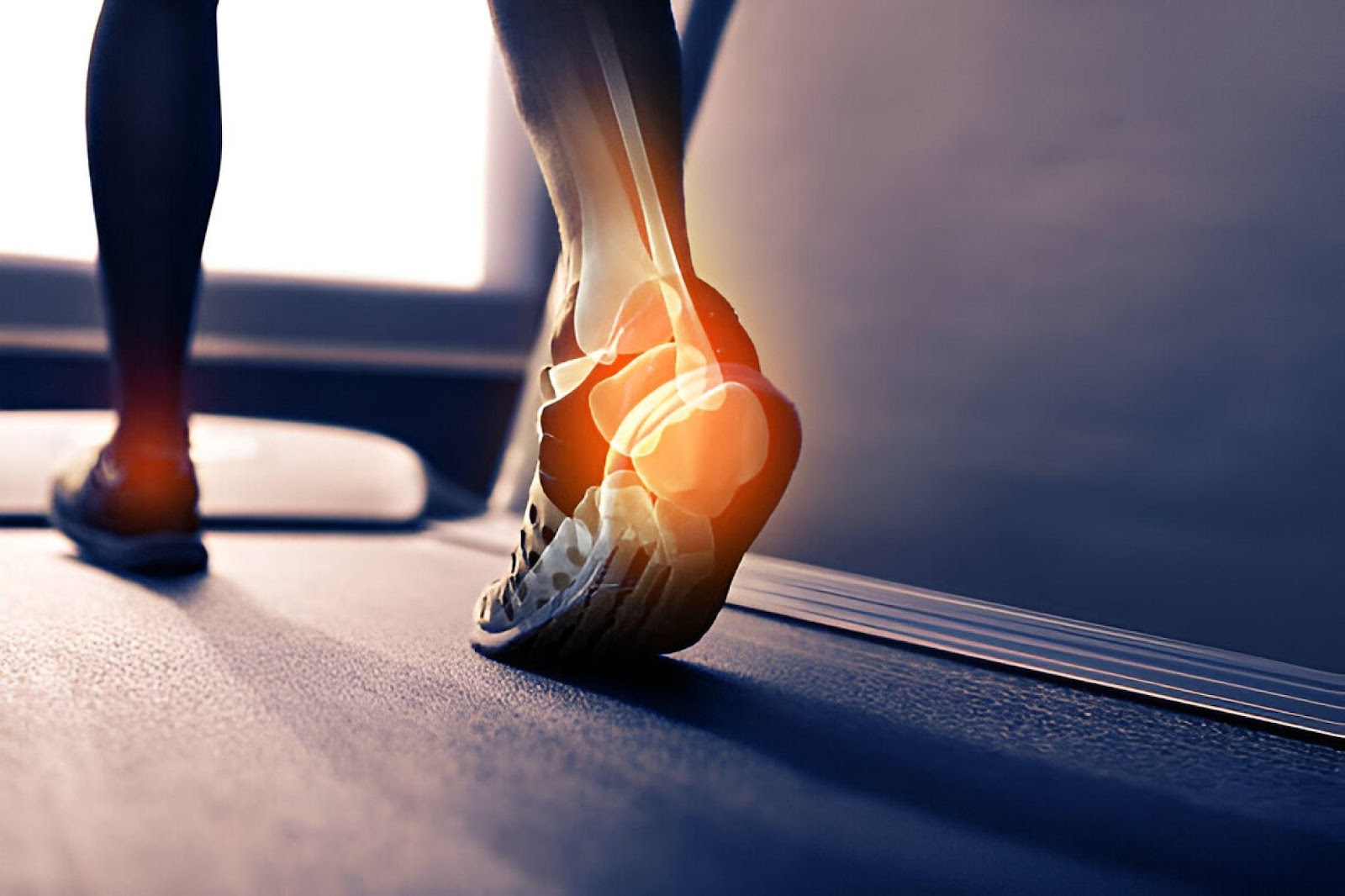Heel pain is quite a common issue that affects millions around the world on an annual basis, significantly impacting their mobility and quality of life. Understanding the causes, prevention methods, and treatment options for heel pain is crucial for managing this discomfort and maintaining an active lifestyle. Today, we will be taking a look at the primary causes of heel pain, ways to prevent it, and the most effective treatment options available at a super speciality hospital in Indore. So, let’s get started.
Causes of Heel Pain
Heel pain can stem from various sources, and identifying the root cause is essential for effective heel pain relief. The most common causes include:
Plantar Fasciitis: This condition involves inflammation of the plantar fascia, a thick band of tissue running across the bottom of the foot, connecting the heel bone to the toes. Plantar fasciitis is often caused by repetitive stress and is particularly common among runners and individuals who spend long hours on their feet.
Heel Spurs: These are bony growths that form on the undersides of the heel. They are frequently associated with plantar fasciitis and can cause significant discomfort, especially when walking or standing. Visiting a super speciality hospital in Indore can prove to be the best option when it comes to addressing this issue effectively.
Achilles Tendinitis: This condition involves inflammation of the Achilles tendon, something that connects the calf muscles to the heel bone. Overuse, tight calf muscles, and insufficient warm-up routines can contribute to Achilles tendinitis. Effective heel pain relief would depend on the identification of the exact causes before a thorough diagnosis can be carried out.
Bursitis: Heel bursitis occurs when the bursa (a small fluid-filled sac that cushions the heel bone) becomes inflamed. This can be due to excessive usage of poorly-fitting shoes or repetitive strenuous activities.
Stress Fractures: Tiny cracks in the heel bone, known as stress fractures, can result from overuse or high-impact activities. Athletes, especially runners, are particularly susceptible to this type of injury.
Sever’s Disease: This condition affects growing children and adolescents. It is related to the inflation of the growth plate.
Prevention of Heel Pain
Preventing heel pain involves adopting practices that reduce the risk of injury and inflammation. Here are some effective strategies for prevention and heel pain treatment:
Wear Supportive Footwear: Choosing shoes with proper arch support and cushioning can significantly reduce the risk of heel pain. Avoid wearing high heels or flat shoes for extended periods.
Maintain a Healthy Weight: Excess body weight puts additional stress on the feet, increasing the risk of heel pain. Maintaining a healthy weight through diet and exercise can help alleviate this pressure.
Warm-Up and Stretching: Stretching and warming up before going for heavy workout sessions or games can help with effective heel pain prevention and relief.
Gradual Increase in Activity: When starting a new exercise regimen, gradually increase the intensity and duration to allow the body to adapt and avoid overuse injuries.
Use Orthotic Inserts: Custom orthotic inserts can provide additional support and distribute pressure evenly across the foot, reducing the risk of conditions like plantar fasciitis and heel spurs.
Rest and Recovery: Allowing adequate rest and recovery time between intense physical activities can prevent overuse injuries and inflammation.
Treatment Options for Heel Pain
Heel pain treatment varies depending on the underlying cause and severity of the condition. Here are some commonly recommended treatment options:
Rest and Ice: For acute heel pain relief, resting and the use of ice is something that can prove to be useful. This method is particularly effective for conditions like Achilles tendinitis and heel bursitis.
Over-the-Counter Medications: Nonsteroidal anti-inflammatory drugs (NSAIDs) such as ibuprofen can help manage pain and reduce inflammation associated with heel pain.
Physical Therapy: A physical therapist can design a tailored exercise program to strengthen the muscles and improve flexibility, particularly in the calf and foot. Physical therapy is often beneficial for treating plantar fasciitis and Achilles tendinitis.
Orthotic Devices: Custom orthotic inserts or heel cups can provide additional support and cushioning, alleviating pressure on the heel and promoting proper foot alignment.
Night Splints: Wearing a night splint can keep the foot in a dorsiflexed position, stretching the plantar fascia and Achilles tendon overnight. This can help reduce morning heel pain associated with plantar fasciitis.
Extracorporeal Shock Wave Therapy (ESWT): This non-invasive treatment involves using shock waves to stimulate healing in the affected area. ESWT is particularly effective for chronic cases of plantar fasciitis and heel spurs.
Corticosteroid Injections: In cases of severe heel pain that does not respond to conservative treatments, corticosteroid injections can provide significant relief by reducing inflammation. However, these should be used sparingly due to potential side effects.
Surgery: Surgical intervention at a hospital in Indore is considered a last resort for heel pain treatment and is typically reserved for cases where conservative treatments have failed. Procedures may include releasing the plantar fascia, removing heel spurs, or repairing the Achilles tendon.
Seeking Professional Help
While many cases of heel pain can be managed with self-care and conservative treatments, it is crucial to seek professional help if:
- The pain is severe or persistent
- There is noticeable swelling or redness
- You experience numbness or tingling
- The pain interferes with daily activities
A healthcare professional, such as a podiatrist, can accurately diagnose the underlying cause of your heel pain and recommend the most appropriate treatment plan.
Conclusion
Heel pain can be debilitating, but understanding its causes, prevention strategies, and treatment options can help manage and alleviate discomfort. For those already experiencing heel pain, rest, physical therapy, orthotic devices, and other treatments can provide effective relief.
For more severe or persistent cases, consulting with a healthcare professional at a super speciality hospital in Indore is essential to determine the best course of action. By taking proactive steps and seeking appropriate treatment, you can achieve heel pain relief and maintain an active, pain-free lifestyle.


